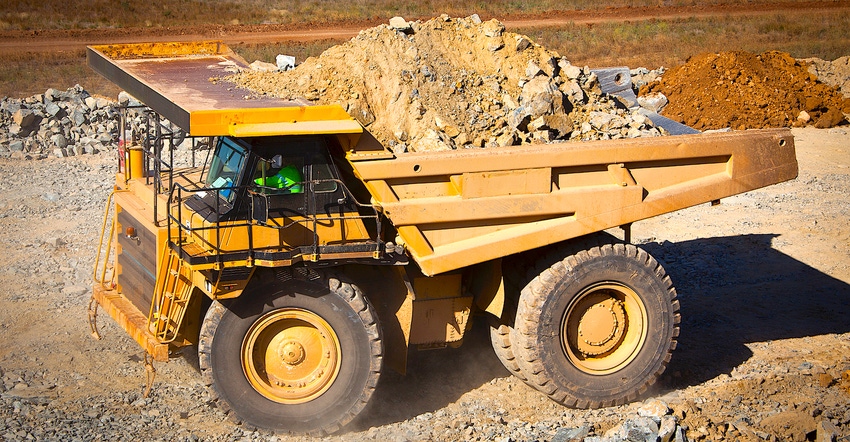Tesla Promises Lithium Refinery Breakthroughs
Tesla claims a 30 percent savings from a streamlined process at the new $375 million Texas plant for battery-grade lithium.

At the groundbreaking ceremony for Tesla’s $375 million lithium refinery near Corpus Christi, Texas, Elon Musk forecast that construction will be completed by next year and that the plant will reach full production capacity a year after. “This is extremely fast by normal standards, but that’s how we do things,” Musk said. The plant is forecast to create 400 jobs in the area, according to Texas governor Greg Abbott.
Musk listed that production capacity in terms of how many cars can be provided with batteries using lithium processed at the plant, which he declared to be approximately a million cars per year. “We’re incredibly excited to announce the biggest lithium refinery, uh, one of the biggest lithium refineries in the world in a location that will be able to, uh, we expect to be able to produce lithium for about a million vehicles and produce more battery-grade lithium than the rest of North America refining capacity combined,” he told attendees to the groundbreaking ceremony. “The potential is there to expand beyond that number as needed,” he added.
This will not fulfill all of Tesla’s needs, he added, but instead insulates the company against future supply complications. “We intend to continue to use suppliers of lithium, so it is not that Tesla is going to do all of it. But we thought it is important to address what we think is, as you look ahead a few years, a fundamental chokepoint in the advancement of electric vehicles is the availability of battery-grade lithium.”
Refining is lithium’s constraint
Mining lithium ore is not a significant obstacle to increased production, but refining that ore is a limitation, Musk said. “Lithium is a very common element on earth,” Musk reminded the audience. “It is present in basically every country. So, it is not that there is a shortage of lithium ore to mine, but there is a shortage of, really, heavy industry refinement of lithium to battery grade.”
Producing battery-grade lithium is the trick, because of stringent purity requirements for EV batteries. “If you have any impurities in the lithium, it causes degradation of the battery, so the purity requirements are extremely high,” he said.
Nevertheless, Tesla’s lithium plant will introduce shortcuts to the production process that eliminate 30 percent of the steps from the conventional lithium refining process while still achieving the necessary purity, according to the company. Tesla is already achieving impressive simplification in its assembly process through the use of large-scale castings.
Pure Enough?
This is possible because the company says it is confident it can achieve that purity in the final product without meeting high purity thresholds in intermediate steps. “Some of that (process simplification) is actually removing some of the purification steps that you would put in if you were a standalone lithium producer because ultimately what matters is impurity levels in the final product, not the intermediates that get handed from supplier to supplier,” explained Tesla’s senior manager of battery minerals and metals, Turner Caldwell.
The plant will also employ different raw materials in a bid for a more environmentally friendly refinery, a waste by-product with industrial applications, and the ability to consume recycled materials in addition to raw materials. “The conventional process is a heavy sulfuric acid consumer, it is a heavy sodium hydroxide consumer, and as a result, the by-products that are produced from that conventional process are challenging to manage, with a lot of sodium sulfate that no one really wants,” Caldwell explained.
“Here, what we’re going to be using are much more inert reagents. We’ll be doing soda ash, sodium carbonate, a very common industrial chemical. We’ll be consuming lime, again, a very common industrial chemical,” he said.
Additionally, the process for these materials is more efficient, according to Caldwell. “It is a much more direct route, consumes 20 percent less energy,” he said. “It consumes reagents that are 60 percent less costly. All-in, the production cost is around 30 percent lower on a unit cost basis.”
Circular economy
Saving money is obviously attractive, but the company also wants to have a useful by-product that doesn’t add cost and environmental impact in disposal. “The real key thing here is that the by-product that is produced is much more inert: basically, a mix of sand and limestone,” he said. “The team here has been working really hard on finding beneficial use opportunities for that sand and limestone to try to feed that into construction materials, so we end up as a net environmentally very neutral site.”
In addition to finding ways to reuse its own by-products, the plant will also seek to reuse materials from retired batteries from companies such as Redwood and also waste manufacturing materials. “As we look forward into the future, day one, [the plant] is designed for spodumene concentrate, it is from hard rock mines,” stated Caldwell.
“But as we start to have recycled batteries coming back, this factory is designed to be feed-flexible," he continued. "We’ll actually be processing lithium out of black mass, as well as from brine and clay operations that will be ramping up in North America. So as we view this it is having a major focus on regionalizing the lithium supply chain. It is all about being feed-flexible and taking advantage of all those feeds, including manufacturing scrap and end-of-life batteries.”
About the Author(s)
You May Also Like


.jpg?width=300&auto=webp&quality=80&disable=upscale)


